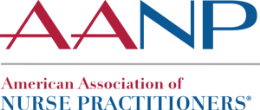Nurse Practitioners Save Lives by Screening for Breast Cancer

Discover how nurse practitioners can make a difference in breast cancer screening with support from their national organization.
In 2020, the Centers for Disease Control and Prevention (CDC) announced that 239,612 new cases of breast cancer were reported among women. In that same year, 42,273 women died of this cancer. To put this in perspective, the CDC adds, “For every 100,000 women, 119 new female breast cancer cases were reported, and 19 women died of this cancer.”
Cancer is the leading cause of death in the U.S. With breast cancer as the second most common form of cancer among women, nurse practitioners (NPs) can help make a dramatic impact in women’s health outcomes through the prevention of this deadly disease. This Breast Cancer Awareness Month, the American Association of Nurse Practitioners® (AANP) is focusing on the importance of screening and rallying for preventive care to help bring this disease to an end.
Protection Through Prevention
Though the prevalence of breast cancer among women may be alarming, a surge in preventive screenings has helped to turn the tide in recent years. The Medical Director of the CDC’s National Breast and Cervical Cancer Early Detection Program, Jacqueline Miller, MD, FACS, explains, “Early detection through services such as mammograms can help women find breast cancer early, when treatments have tremendous success rates.” In fact, the Office on Women’s Health reports the five-year survival rate for localized breast cancer is 99% when detected early. Though regular screenings cannot prevent breast cancer, they can certainly save patients’ lives.
What else can proactive patients do to minimize their risk of breast cancer? According to the National Cancer Institute at the National Institutes of Health, “Many studies have shown that physically active women have a lower risk of breast cancer than inactive women. In a 2016 meta-analysis that included 38 cohort studies, the most physically active women had a 12–21% lower risk of breast cancer than those who were least physically active.” During their routine screenings, NPs can empower patients to take charge of their health by proposing these nutrition and wellness tips from the AANP News Feed:
- Help patients achieve 20 minutes of activity a day by suggesting possibly overlooked opportunities such as walking the dog after dinner and marching in place.
- Ask a patient what kind of food they enjoy and work within those constructs to institute small changes in their diet, like choosing healthier options when opting for fast food.
- Share resources on food group and portion fundamentals with patients, such as the MyPlate resource offered by the U.S. Department of Agriculture.
Seeing Beyond the Screening
Sometimes a mammogram yields some unusual findings that require further analysis, requiring patients to undergo a breast biopsy. Though this news may concern patients, it’s important to note that over 1 million breast biopsies are done each year in the U.S. and well over 70% of those biopsies do not reveal breast cancer. However, those biopsies often reveal other disorders and potential risks for your patients. You can review the variety of breast biopsy results and identify management of proliferative breast disorders with and without atypia by enrolling in “When It's Not Breast Cancer: Management of Atypical Breast Lesions” in the AANP CE Center.
If you are screening your patients for breast cancer, consider alternative diagnoses that can pop up during this process. These screenings are not just the best means of protecting against breast cancer, but valuable opportunities to check in with patients. NPs care for the whole patient beyond just the issues they’re presented with in the immediate moment, so consider how you can help screen your patients for other diseases — such as the less widely discussed female reproductive cancers. Enroll in “Ovarian and Uterine Cancer” to earn valuable continuing education credit while learning about the causes, risks and treatment options for these diseases and improving women’s health outcomes.
Stay Up to Date on Breast Cancer Screening Guidelines
You know the fight against breast cancer begins with screening. That’s why AANP has developed the Clinical Practice Brief: Breast Cancer Screening Guidelines Summary, which gathers recommendations from the American Cancer Society (ACS), American College of Obstetricians and Gynecologists and United States Preventive Services Task Force. Access this resource today to help assist your patients with screenings throughout Breast Cancer Awareness Month and beyond.

